
Admiral Arthur Phillip was a Royal Navy officer and the first Governor of New South Wales who founded the British penal colony that later became the city of Sydney, Australia.
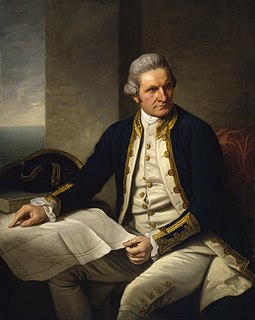
Captain James Cook was a British explorer, navigator, cartographer, and captain in the Royal Navy. He made detailed maps of Newfoundland prior to making three voyages to the Pacific Ocean, during which he achieved the first recorded European contact with the eastern coastline of Australia and the Hawaiian Islands, and the first recorded circumnavigation of New Zealand.

The islands which now form the Republic of Kiribati have been inhabited for at least seven hundred years, and possibly much longer. The initial Micronesian population, which remains the overwhelming majority today, was visited by Polynesian and Melanesian invaders before the first European sailors visited the islands in the 17th century. For much of the subsequent period, the main island chain, the Gilbert Islands, was ruled as part of the British Empire. The country gained its independence in 1979 and has since been known as Kiribati.

The First Fleet was the 11 ships that departed from Portsmouth, England, on 13 May 1787 to found the penal colony that became the first European settlement in Australia. The Fleet consisted of two Royal Navy vessels, three store ships and six convict transports, carrying between 1,000 and 1,500 convicts, marines, seamen, civil officers and free people, and a large quantity of stores. From England, the Fleet sailed southwest to Rio de Janeiro, then east to Cape Town and via the Great Southern Ocean to Botany Bay, arriving over the period of 18 to 20 January 1788, taking 250 to 252 days from departure to final arrival.

Giovanni da Verrazzano was an Italian explorer of North America, in the service of King Francis I of France.
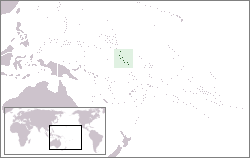
The Gilbert Islands are a chain of sixteen atolls and coral islands in the Pacific Ocean about halfway between Papua New Guinea and Hawaii. They form the main part of Kiribati.

Samuel Eliot Morison was an American historian noted for his works of maritime history and American history that were both authoritative and popular. He received his Ph.D. from Harvard University in 1912, and taught history at the university for 40 years. He won Pulitzer Prizes for Admiral of the Ocean Sea (1942), a biography of Christopher Columbus, and John Paul Jones: A Sailor's Biography (1959). In 1942, he was commissioned to write a history of United States naval operations in World War II, which was published in 15 volumes between 1947 and 1962. Morison wrote the popular Oxford History of the American People (1965), and co-authored the classic textbook The Growth of the American Republic (1930) with Henry Steele Commager. Over the course of his distinguished career, Morison received eleven honorary doctoral degrees, and garnered numerous literary prizes, military honors, and national awards from both foreign countries and the United States, including two Pulitzer Prizes, two Bancroft Prizes, the Balzan Prize, the Legion of Merit, and the Presidential Medal of Freedom.

The History of United States Naval Operations in World War II is a 15-volume account of the United States Navy in World War II, written by Samuel Eliot Morison and published by Little, Brown and Company between 1947 and 1962.

Events from the 16th century in Canada.
This is a list of aviation-related events from 1943:
This is a list of aviation-related events from 1944:
This is a list of aviation-related events from 1945:
Charlotte was an English merchant ship built in the River Thames in 1784 and chartered in 1786 to carry convicts as part of the First Fleet to New South Wales. She returned to Britain from Botany Bay via China, where she picked up a cargo for the British East India Company. Charlotte then spent much of the rest of her career as a West Indiaman in the London-Jamaica trade. She may have been lost off Newfoundland in 1818; in any case, she disappears from the lists by 1821.

Mejit is an island in the Pacific Ocean, and forms a legislative district of the Ratak Chain of the Marshall Islands. Unlike most of the other islands of the Marshall Islands, Mejit is a stony island rather than a coral atoll, although it is surrounded by a fringing coral reef enclosing a narrow lagoon. It is located east of the main line of the Ratak chain, approximately 110 kilometres (68 mi) northeast from Wotje.
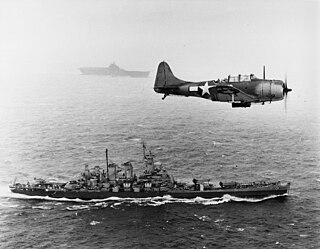
The GilbertandMarshall Islands Campaign were a series of battles fought from November 1943 through February 1944, in the Pacific Theater of World War II between the United States and the Empire of Japan. They were the first steps of the drive across the central Pacific by the United States Pacific Fleet and Marine Corps. The purpose was to establish airfields and naval bases that would allow air and naval support for upcoming operations across the Central Pacific. Operations Galvanic and Kourbash were the code names for the Gilberts campaign that included the seizures of Tarawa and Makin. Operations Flintlock and Catchpole were aimed at capturing Japanese Bases at Kwajalein, Eniwetok, and Majuro in the Marshall Islands.

Robert Carlisle Giffen was an admiral in the United States Navy.
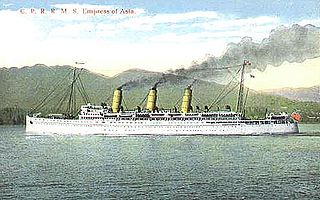
RMS Empress of Asia was an ocean liner built in 1912–1913 by Fairfield Shipbuilding and Engineering at Govan on the Clyde in Scotland for Canadian Pacific Steamships.
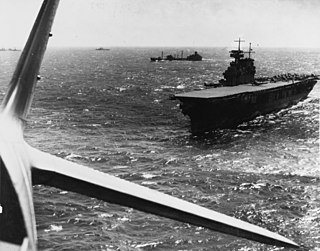
Task Force 17 (TF17) was an aircraft carrier task force of the United States Navy during the Pacific Campaign of World War II. TF17 participated in several major carrier battles in the first year of the war.
Thomas Gilbert was an 18th-century British mariner.



















